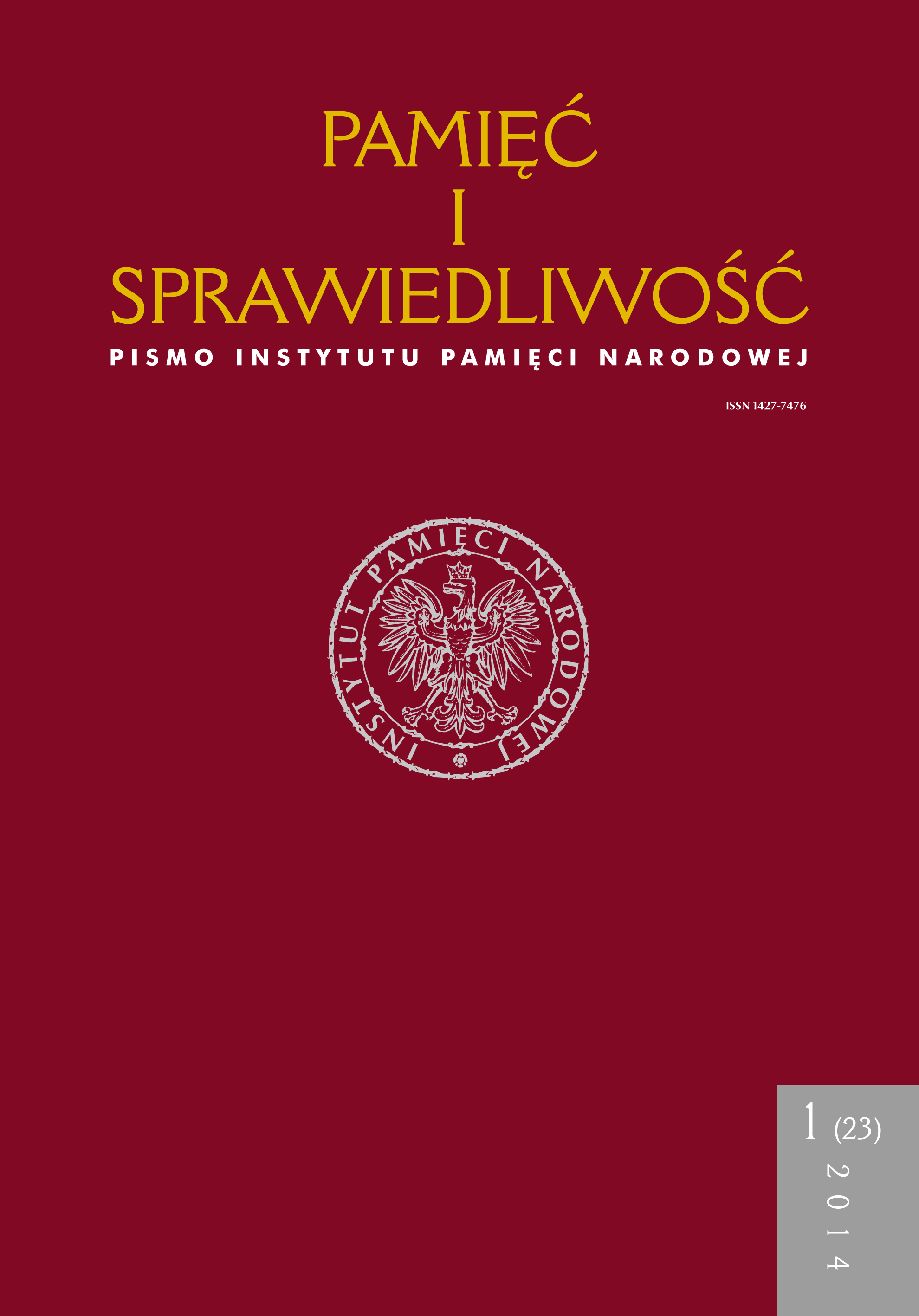Z dziejów Zagłady w Kraju Warty. Losy ludności żydowskiej w Sieradzu 1939–1942
Pamięć i Sprawiedliwość, Том 23 № 1 (2014), pages: 247-266
Publication date: 2014-06-30
Аннотация
In 1938, the total of 10,747 inhabitants of Sieradz included 2,555 Jews,
namely 1,170 men and 1,385 women. After 1 September 1939, like the Polish
population, vast majority of them left the town due to the announced defence of the line
of the Warta River. Some of them did not return to their homes after that. Later
on, the number of Jews in Sieradz changed also due to deportations to the General
Government and to labour camps in the area of the Warta Country, as well as due
to the influx of Jews from the surrounding towns.
From the beginning of the occupation, Jews from Sieradz experienced the Nazi
terror, including executions. The first ones were shot already on 15 September
1939. At the beginning of 1940, a ghetto was created in Sieradz. Although it was
not a closed ghetto, it did contribute to a serious deterioration of the situation
of the Jewish population. Numerous penalties imposed by the Schupo officers
prove that in order to survive in the ghetto, one had to manage to get additional
food outside its boundaries. The Judenrat established in Sieradz, led by Kalman
Rosenblu, had limited possibilities of improving the situation of local Jews. It even
failed to create joint craft workshops to solve the problem of excess of manpower.
Support from the Polish population was not significant, as it did not have an
organised nature.
From 24 August 1942, liquidation of the ghetto in Sieradz commenced. All the
Jews were placed in a local post-Dominican monastery, and from there they were
transported for extermination. On the first day, 184 people were transported to
the ghetto in Łódź. Until Friday, 28 August, about 1,400 Jews from Sieradz were
deported to the extermination camp in Chełmno on the Ner River.
Наиболее читаемые статьи этого автора (авторов)
- Krzysztof Lesiakowski, Strajk robotników łódzkich w lutym 1971 roku , Pamięć i Sprawiedliwość: Том 1 № 1 (2002)
- Krzysztof Lesiakowski, Marcin Zaremba, Dariusz Stola, [Recenzja] PRL. Trwanie i zmiana, red. Dariusz Stola i Marcin Zaremba, Wyższa Szkoła Przedsiębiorczości i Zarządzania im. Leona Koźmińskiego, Warszawa 2003, ss. 424 , Pamięć i Sprawiedliwość: Том 4 № 2 (2003)
- Krzysztof Lesiakowski, Wytyczne do pracy oficerów Głównego Zarządu Informacji WP w brygadach i komendach Powszechnej Organizacji „Służba Polsce” 1948–1949 , Pamięć i Sprawiedliwość: Том 12 № 1 (2008)
- Krzysztof Lesiakowski, Wiktor Pietruszka (1910–2003) – zapomniany rewindykator polskich dzieci z powojennych Niemiec , Pamięć i Sprawiedliwość: Том 44 № 2 (2024)
- Krzysztof Lesiakowski, Łódź wielokulturowa i przemysłowa. Perspektywa historyka niemieckiego. Hans-Jürgen Bömelburg, Lodz: Geschichte einer multikulturellen Industriestadt im 20. Jahrhundert, Brill Schöningh, Padeborn 2022, 502 s. , Pamięć i Sprawiedliwość: Том 41 № 1 (2023)
- Krzysztof Lesiakowski, Sprawiedliwy wśród Narodów Świata- profesor Helena Brodowska-Kubicz (1914-2003) , Pamięć i Sprawiedliwość: Том 38 № 2 (2021)
 Język Polski
Język Polski
 English
English
 Deutsch
Deutsch
 Français (France)
Français (France)
 Italiano
Italiano
 Русский
Русский


 PDF (Język Polski)
PDF (Język Polski)
